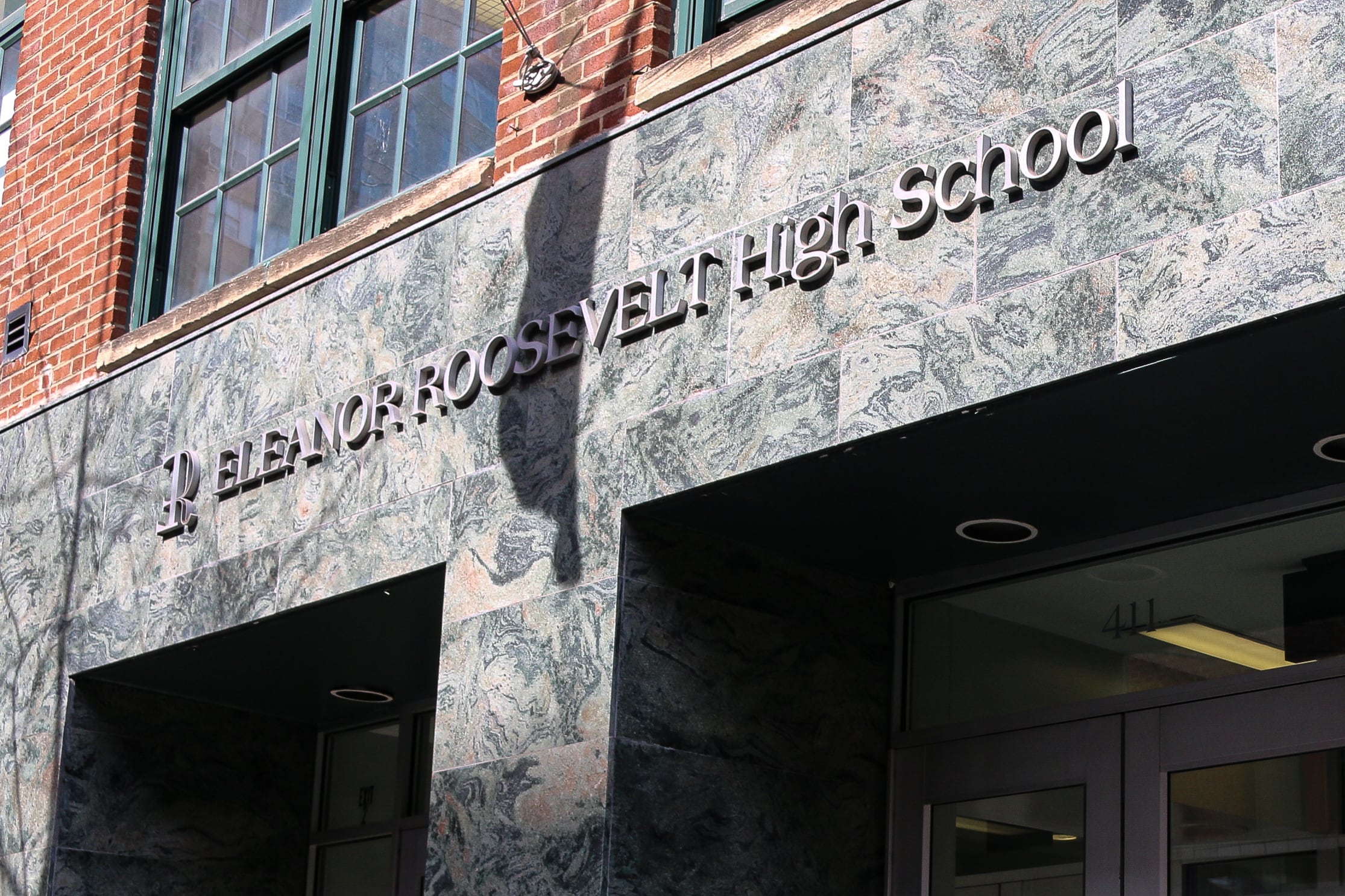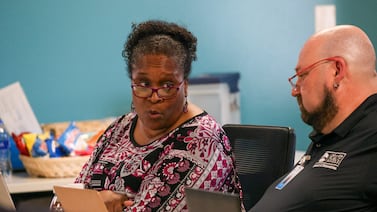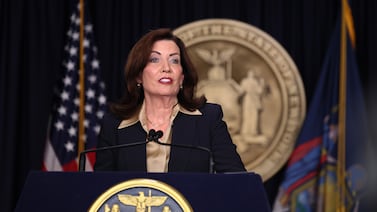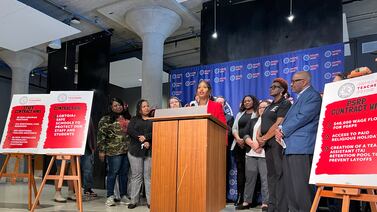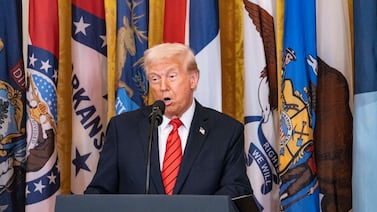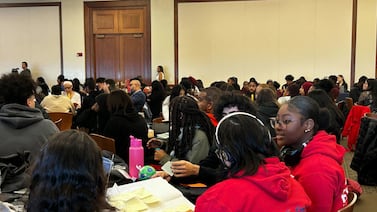Schools Chancellor David Banks intends to bring back a controversial admissions bump for Manhattan eighth-graders at some of New York City’s most sought-after high schools, he told parents this week.
The rule, which was scrapped by former Mayor Bill de Blasio in 2020, gave students from Manhattan’s District 2 first crack at a half dozen selective schools in the district, including Eleanor Roosevelt, NYC Lab School for Collaborative Studies, and Millennium High School. The district spans much of lower and midtown Manhattan along with the Upper East Side and is one of the city’s most affluent.
School integration advocates lauded de Blasio’s move. They argue that, in conjunction with other reforms, removing the district priority has significantly increased the share of Black, Latino, and low-income students at several of those schools.
But other parents have been forcefully pushing to restore the priority, saying that without it, district students have less of a chance of getting into coveted local schools and that some frustrated families are pulling out of the public school system altogether.
Banks, who has final say over school and district admissions policies, said at a raucous District 2 town hall Thursday night that he met with a group of those parents, including members of the local Community Education Council and the pro-screening group Parent Leaders for Accelerated Curriculum and Education, known as PLACE, on Wednesday.
“They shared the effects of removing the priority to District 2 families,” he said. “And we are committed to granting D2 some kind of priority. I’m looking at various models as we speak,” he said. Details will be finalized before the start of the next admissions cycle this fall, he said. Applications are typically due in early December.
The announcement drew immediate plaudits from supportive council members at Thursday’s raucous town hall meeting, as well as boos from some members of the audience.
“I think that’s a huge win,” said Craig Slutzkin, a parent on District 2′s Community Education Council and PLACE member who met with Banks earlier this week. “It shows he understands the needs of District 2 families.”
The announcement set off alarm bells for school integration advocates, who worry reinstating the admissions priority could roll back significant progress diversifying some competitive high schools.
“It’s extremely frustrating and concerning and sad to hear that he meets with this really small group of constituents and then decides to reverse a policy that was extremely effective at opening access and opportunity for some of our most marginalized student groups in the city,” said Nyah Berg, the executive director of Appleseed NY, a group that advocates for school integration.
“For me, it’s fundamentally just not sound policy.”
Banks rolls back pandemic admissions reforms
The reinstatement of District 2 priority would represent another reversal of a de Blasio pandemic-era admissions reform meant to chip away at racial and economic segregation in the city’s stratified public middle and high schools.
Banks halted a de Blasio plan to phase out separate elementary school gifted and talented classes, and he allowed local superintendents to bring back selective screens at middle schools, which were banned during the pandemic.
Banks’s announcement about District 2 priority came the same day that New York’s appellate division ruled a lawsuit filed by student integration advocates could proceed. The suit claims that the city’s segregated school system denies Black and Latino students their constitutional right to a sound, basic education.
The District 2 admissions priority, which school officials introduced in the 1990s as an effort to keep middle class families from fleeing public schools, has long attracted intense criticism from integration advocates.
In general, the city’s system of high school choice aims to give students from across the city equal access to high schools. There are some schools that grant borough preferences and others that prioritize students from the surrounding neighborhoods, but the District 2 priority was unique in giving a district-wide bump at some of the city’s most-sought after schools.
In practice, the rule virtually guaranteed that students outside of the district would not have a shot at getting into a handful of coveted high schools, no matter how stellar their academic records.
Eleanor Roosevelt offered 100% of its seats to District 2 students in 2017, while Baruch College Campus High School was 98% District 2 students, Chalkbeat reported in 2018.
In the months leading up to de Blasio’s 2020 decision to scrap the District 2 priority, several principals of schools included in the policy spoke out against the practice.
“The lack of diversity among students, faculty and staff is a disservice to our community as a whole,” Eleanor Roosevelt principal Dimitri Saliani wrote in a 2020 email to parents, according to the New York Times.
Removing District 2 priority, in conjunction with broader changes to the admissions system for selective high schools and initiatives from individual schools to set aside more seats for underrepresented students, has made a significant impact at several schools.
In the span of a single year, Eleanor Roosevelt went from sending 1% of its offers to students outside District 2, to 62% after the district priority was removed. The share of offers going to low-income students jumped from 16% to 50%.
Over time, the changes have profoundly shifted the demographics of schools like Roosevelt, which is now 27% Black and Latino and 37% low-income students. The school was 12% Black and Latino and 19% low-income students in 2019.
The NYC Lab School for Collaborative Studies jumped from 14% Black and Latino and 28% low-income students in 2019 to 20% Black and Latino and 43% low-income students in 2022. A similar change happened at Baruch College Campus High School.
At Millennium High School in lower Manhattan (which gave priority to students living or attending school south of East Houston or West Houston Street) and School of the Future in Gramercy, the numbers of Black and Latino and low-income students have stayed relatively flat. And at the NYC Museum School in Chelsea, the share of Black and Latino and low-income students decreased.
District families have mixed reactions
Slutzkin cited intense demand from district parents to bring back the rule, saying he heard from roughly 1,000 people in support of a petition to reinstate it.
He also pointed to the fact that only 55% of District 2 students got an admissions offer at one of their top three high school choices last year, the lowest rate of any district in the city, according to Education Department data.
“No families should be forced to have excessive commutes to go to schools that meet their needs,” he said.
But Gavin Healy, another parent on the local education council, said the relatively low rate of top choice matches for District 2 students likely has to do with families disproportionately selecting a small number of highly-competitive schools on their application.
“Manhattan has room, it’s just not at the schools that some of the families in the district want,” he said.
Slutzkin argued that schools with open seats in Manhattan may have low graduation rates and would not meet the needs of high-achieving students, saying it’s “incumbent upon the Education Department to work on those schools and get them to be schools that are desired.”
Proponents of the D2 admissions priority have also argued that some district families are pulling out of the public school system and enrolling in private school because they’re not getting into their top choice public schools.
One Manhattan principal of a school that formerly offered District 2 priority wasn’t surprised that officials plan to reinstate the policy.
“I get the sense that the battle to keep students in the public schools for financial reasons is a big one,” said the principal, who spoke anonymously because they weren’t authorized to talk to the press. “They need to put up dams, and this is one way.”
Healy said he was “not worried about the threat of people leaving,” adding that the district is also seeing an influx of new students, including asylum seekers.
Michael Elsen-Rooney is a reporter for Chalkbeat New York, covering NYC public schools. Contact Michael at melsen-rooney@chalkbeat.org.

